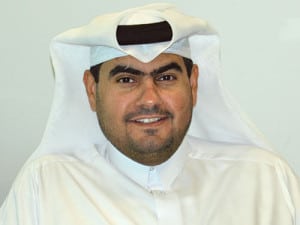Latest News
[Via Satellite 01-21-2015] Last month Es’hailSat celebrated the one-year anniversary of its first satellite, Es’hail 1. After entering service on Dec. 18, 2013, the Es’hailSat satellite saw extensive use from beIN Sports for transmitting the 2014 FIFA World Cup from Brazil. Es’hailSat supported the only Free-to-Air (FTA) broadcasting in the Middle East and Northern Africa (MENA) region. Al-Jazeera Media Network is also a major customer on Es’hail 1, prompting a healthy beginning for the company’s satellite services.
“Es’hail 1 has exceeded our expectations in performance, fill rate and revenue generation, demonstrating that the satellite is very attractive to our customers who value our broadcasting independence, quality of service and market penetration,” Ali Ahmed Al-Kuwari, CEO of Es’hailSat told Via Satellite. “Our customers have fully utilized the new features and high performance.”
Now, the company’s preparations for the next satellite, Es’hail 2 are in full swing. Mitsubishi Electric is building the satellite with Ka- and Ku-band transponders on the DS2000 satellite bus, and SpaceX is contracted to conduct the launch using a Falcon 9 rocket in 2016. With unique technology on-board to mitigate intentional interference — a persistent problem in the Middle East and North Africa (MENA) region — Al-Kuwari is confident the satellite will further grow Es’hailSat’s stake in the regional Direct-to-Home (DTH) market.
“Es’hail 2 will be located beside Es’hail 1 at the 26 [degrees East] DTH hotspot neighborhood. Es’hailSat has been in a fortunate position to bring new capacity to the 26 [degrees East] neighborhood. We have seen that the uptake of Es’hail 1 shows there is significant demand both nationally and internationally. Es’hail 2 will bring additional capacity to a growing DTH market while premium capacity is in short supply,” he said.
Es’hailSat is situated among a number of other regional operators including Yahsat, Nilesat and Arabsat that have significantly more experience in the market. Al-Kuwari said an advantage of being the new operator in town is the perception as an alternative and independent capacity provider — an image further buoyed by the company’s future capacity plans.
“We have a lot of respect for the regional operators and, as the youngest operator of the four, we hope to learn lessons from them quickly. We have been fortunate to time the availability of our new capacity on Es’hail 1 and 2 with the customer demand, and the presence of interference mitigation technology on our satellites was also very timely given the current operational environment,” said Al-Kuwari.
On the ground, Es’hailSat teamed up with Kratos Defense and Security Solutions last year to upgrade its Capacity Management Center (CMC) in preparation for Es’hail 2, and partnered with SES subsidiary SES TechCom for assistance building a new teleport near Qatar’s capital city, Doha.
“Our intention is to build a world class teleport and satellite control center to operate the satellites in our fleet and to enable our customers to uplink their services from Doha,” explained Al-Kuwari. “The number of Earth stations will depend on the number of satellites to be controlled and our customer demand for uplinking and turn-around services. We have not finalized the [Request for Proposals] RFP for the first set of Earth stations at this point in time but this is anticipated in 2015.”
Qatari engineers have received the chance to learn more about satellite design through Mitsubishi Electric, and SES TechCom engineers are working together with Es’hailSat’s project management team and associated contractors to build the new teleport. Al-Kuwari said Es’hailSat is careful to invest in both satellite infrastructure and its staff, having run extensive training programs through collaborative projects and undergraduate university courses. These actions help the company create a business that aligns with the goals of Qatar’s 2030 National Vision, he said.
Es’hailSat is not limiting its scope strictly to the MENA region, though Al-Kuwari said the company is keen to leverage the infrastructure in and around Doha. Where national stakeholders look to expand internationally could influence future Es’hailSat markets. Currently the regional transition to HDTV, along with new content, bundles and platforms launching are driving the uptake of broadcast capacity, he said. Al-Kuwari added that Es’hailSat intends to better define the market requirement, services and business case for its next satellite, Es’hail 3, during 2015.
Get the latest Via Satellite news!
Subscribe Now